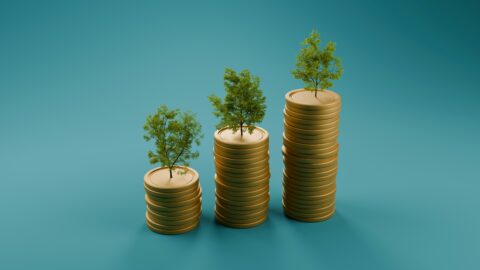Everybody is talking about organic wine. Commercials claim it is better for the environment, because the conservation-minded way of handling nature safeguards the habitat of a diverse range of organisms. The year-round revegetation that is customary in organic agriculture and the build-up of top soil allows for the binding of larger amounts of carbon dioxide. According to this information provided by BIO-AUSTRIA, then, each bottle of organic wine consumed is beneficial to the environment. Austria is also among the top producers in Europe in terms of organic agriculture.
Vienna: twice as many organic vineyards as in Lower Austria
According to a study by the Austrian Federal Ministry of Sustainability and Tourism, the share of organic agriculture in Austria has increased by 20% in the past ten years; it accounted for about 20% of the enterprises and 24% of cultivated area, respectively, in 2017. This means that every fifth enterprise is run organically.
The area of organic vineyards has also increased continuously since 2000 in Austria, growing by 10% both in 2016 and 2017. In total, 14% of all vineyards are run organically in Austria. At 23%, the share in Vienna is twice as high as in Lower Austria and three times as high as in Styria. According to the Vienna Chamber of Commerce, this growth is mainly due to the strongly growing degree of regional marketing, given that direct marketing in combination with organic business practices represents the socially and environmentally most agreeable form of marketing.
Smaller grapes, more aroma
The idea of organic viticulture is to take synthetic pesticides out of the cycle and instead introduce beneficial organisms and support the strength of the plants through the use of herbal and compost extracts. According to BIO-AUSTRIA, these measures are meant to improve the vitality of the vines and the quality of the wine. The use of year-round revegetation creates competition for nutrients and water, as a result of which the grapes are smaller but hold more aroma.
Organic and conventional wines differ in pricing especially if wines of different quality, provenance, or grape are being compared to each other. If external costs created by the impact on the environment were to be taken into consideration, organic wines would actually be cheaper still. Potential externalities are damages caused by flooding, soil erosion, or environmental pollution. Polluted soil is not only less fertile, but also drier and can therefore not absorb the same amount of rain water.
One critical issue, however, in certified organic viticulture is the use of copper and sulphuric solutions in an effort to fight or example mildew. Biodynamic cultivation applies even stricter thresholds and tries to promote exclusively natural processes.
Biodynamic viticulture at Austria’s oldest vineyard
Nikolaihof in the Wachau region is the oldest vineyard of Austria with a history of almost 2000 years. The vintners apply the anthroposophical teachings of Rudolf Steiner, producing Riesling and Grüner Veltliner on 22 hectares according to strict biodynamic Demeter guidelines. Instead of synthetic pesticides, they employ liquid nettle manure, valerian drops, or horsetail tea. Wines are stored up to 20 years so as to give them ample time for development. It is the basic principle of biodynamic cultivation to influence nature as little as possible in order to instil the wine with a maximum amount of power and energy.
Read more articles from this issue of our ESG letter here.
*ESG stands for Environmental, Social and Governance“ – These are the three broad categories according to which companies are examined in sustainable investment.
Legal note:
Prognoses are no reliable indicator for future performance.
Legal disclaimer
This document is an advertisement. Unless indicated otherwise, source: Erste Asset Management GmbH. The language of communication of the sales offices is German and the languages of communication of the Management Company also include English.
The prospectus for UCITS funds (including any amendments) is prepared and published in accordance with the provisions of the InvFG 2011 as amended. Information for Investors pursuant to § 21 AIFMG is prepared for the alternative investment funds (AIF) administered by Erste Asset Management GmbH pursuant to the provisions of the AIFMG in conjunction with the InvFG 2011.
The currently valid versions of the prospectus, the Information for Investors pursuant to § 21 AIFMG, and the key information document can be found on the website www.erste-am.com under “Mandatory publications” and can be obtained free of charge by interested investors at the offices of the Management Company and at the offices of the depositary bank. The exact date of the most recent publication of the prospectus, the languages in which the fund prospectus or the Information for Investors pursuant to Art 21 AIFMG and the key information document are available, and any other locations where the documents can be obtained are indicated on the website www.erste-am.com. A summary of the investor rights is available in German and English on the website www.erste-am.com/investor-rights and can also be obtained from the Management Company.
The Management Company can decide to suspend the provisions it has taken for the sale of unit certificates in other countries in accordance with the regulatory requirements.
Note: You are about to purchase a product that may be difficult to understand. We recommend that you read the indicated fund documents before making an investment decision. In addition to the locations listed above, you can obtain these documents free of charge at the offices of the referring Sparkassen bank and the offices of Erste Bank der oesterreichischen Sparkassen AG. You can also access these documents electronically at www.erste-am.com.
Our analyses and conclusions are general in nature and do not take into account the individual characteristics of our investors in terms of earnings, taxation, experience and knowledge, investment objective, financial position, capacity for loss, and risk tolerance. Past performance is not a reliable indicator of the future performance of a fund.
Please note: Investments in securities entail risks in addition to the opportunities presented here. The value of units and their earnings can rise and fall. Changes in exchange rates can also have a positive or negative effect on the value of an investment. For this reason, you may receive less than your originally invested amount when you redeem your units. Persons who are interested in purchasing units in investment funds are advised to read the current fund prospectus(es) and the Information for Investors pursuant to § 21 AIFMG, especially the risk notices they contain, before making an investment decision. If the fund currency is different than the investor’s home currency, changes in the relevant exchange rate can positively or negatively influence the value of the investment and the amount of the costs associated with the fund in the home currency.
We are not permitted to directly or indirectly offer, sell, transfer, or deliver this financial product to natural or legal persons whose place of residence or domicile is located in a country where this is legally prohibited. In this case, we may not provide any product information, either.
Please consult the corresponding information in the fund prospectus and the Information for Investors pursuant to § 21 AIFMG for restrictions on the sale of the fund to American or Russian citizens.
It is expressly noted that this communication does not provide any investment recommendations, but only expresses our current market assessment. Thus, this communication is not a substitute for investment advice.
This document does not represent a sales activity of the Management Company and therefore may not be construed as an offer for the purchase or sale of financial or investment instruments.
Erste Asset Management GmbH is affiliated with the Erste Bank and austrian Sparkassen banks.
Please also read the “Information about us and our securities services” published by your bank.



